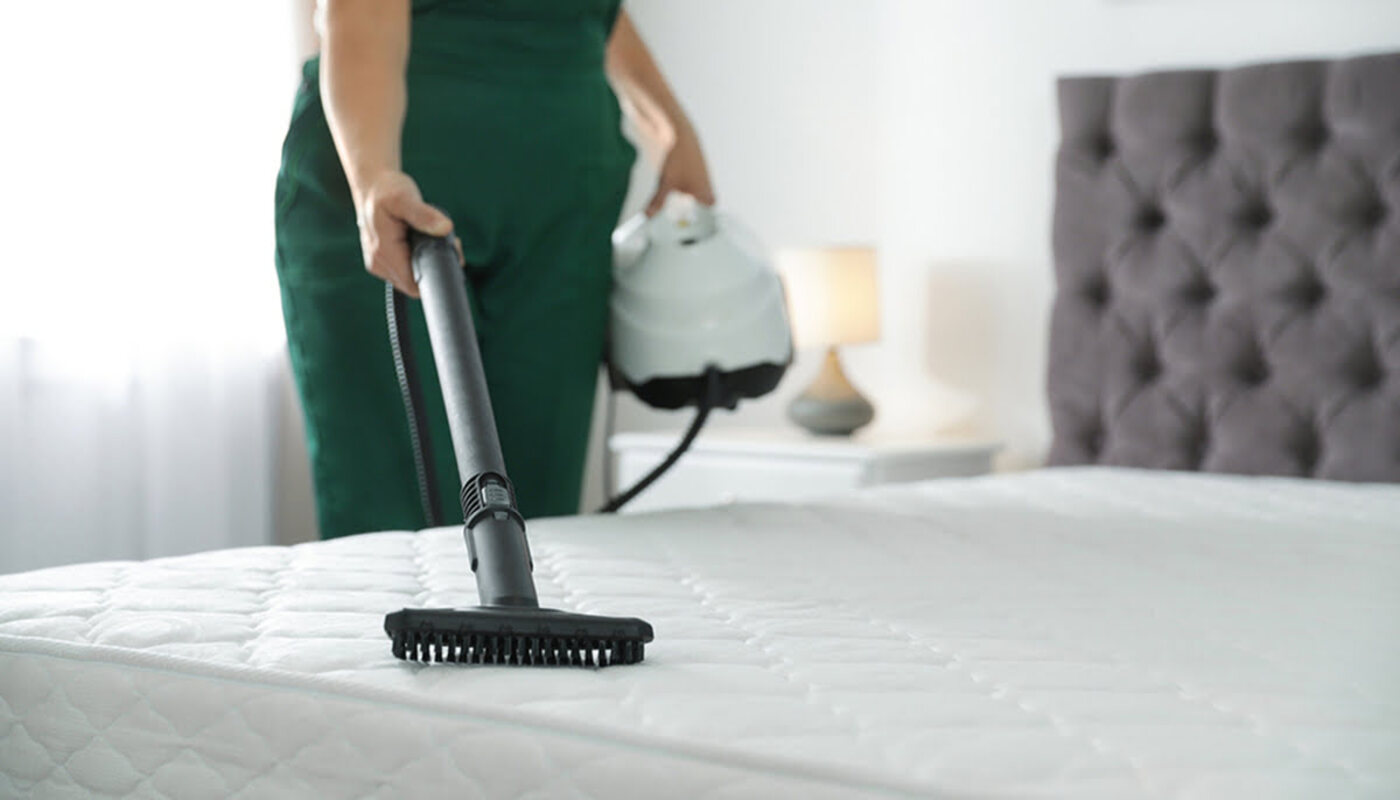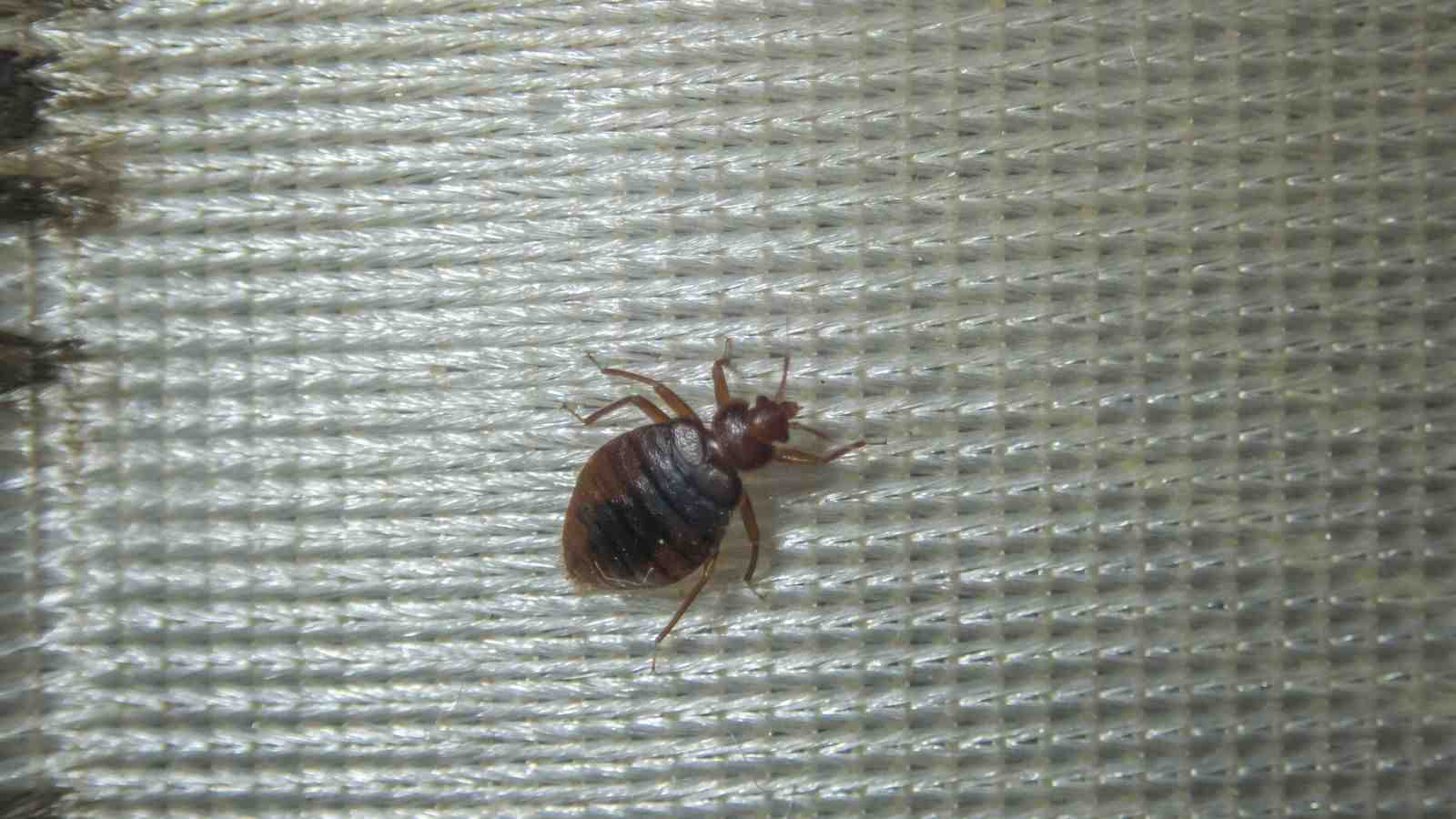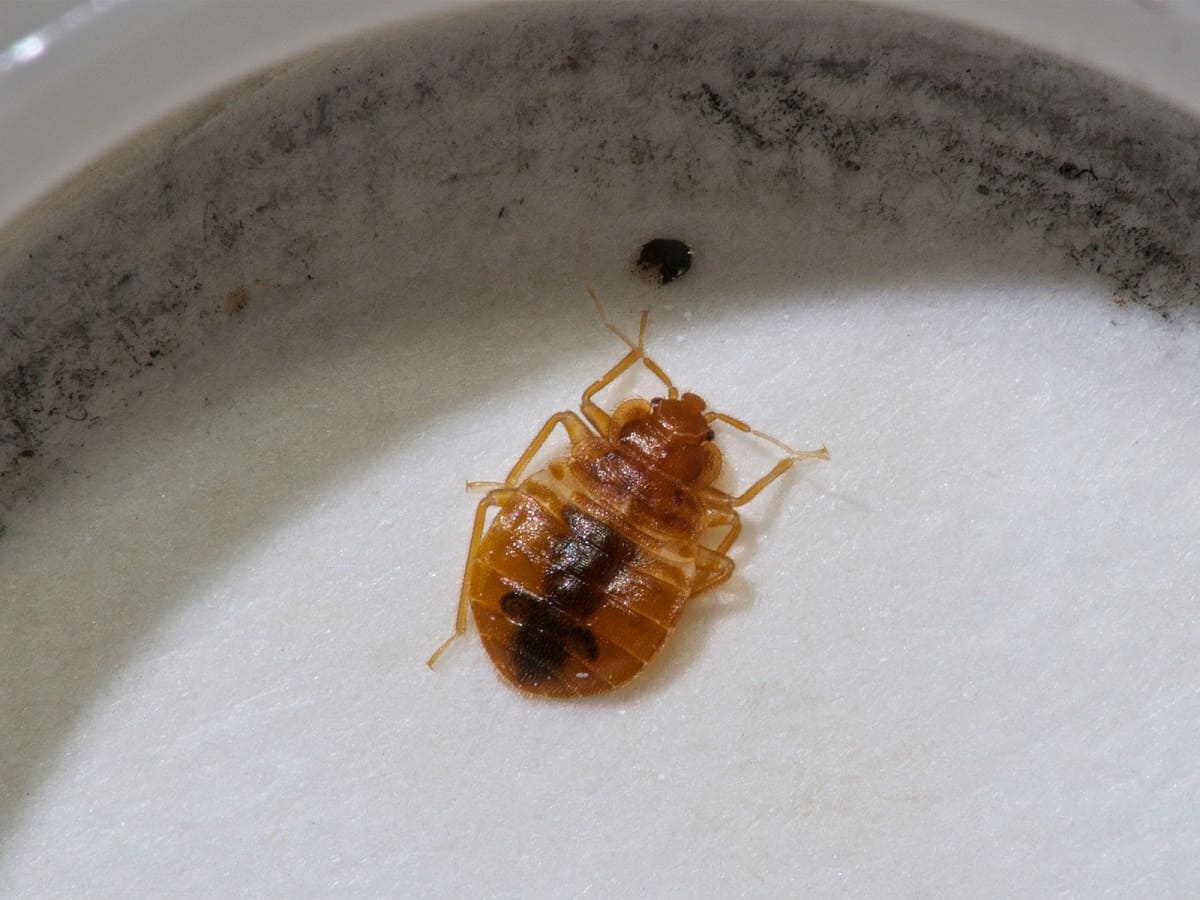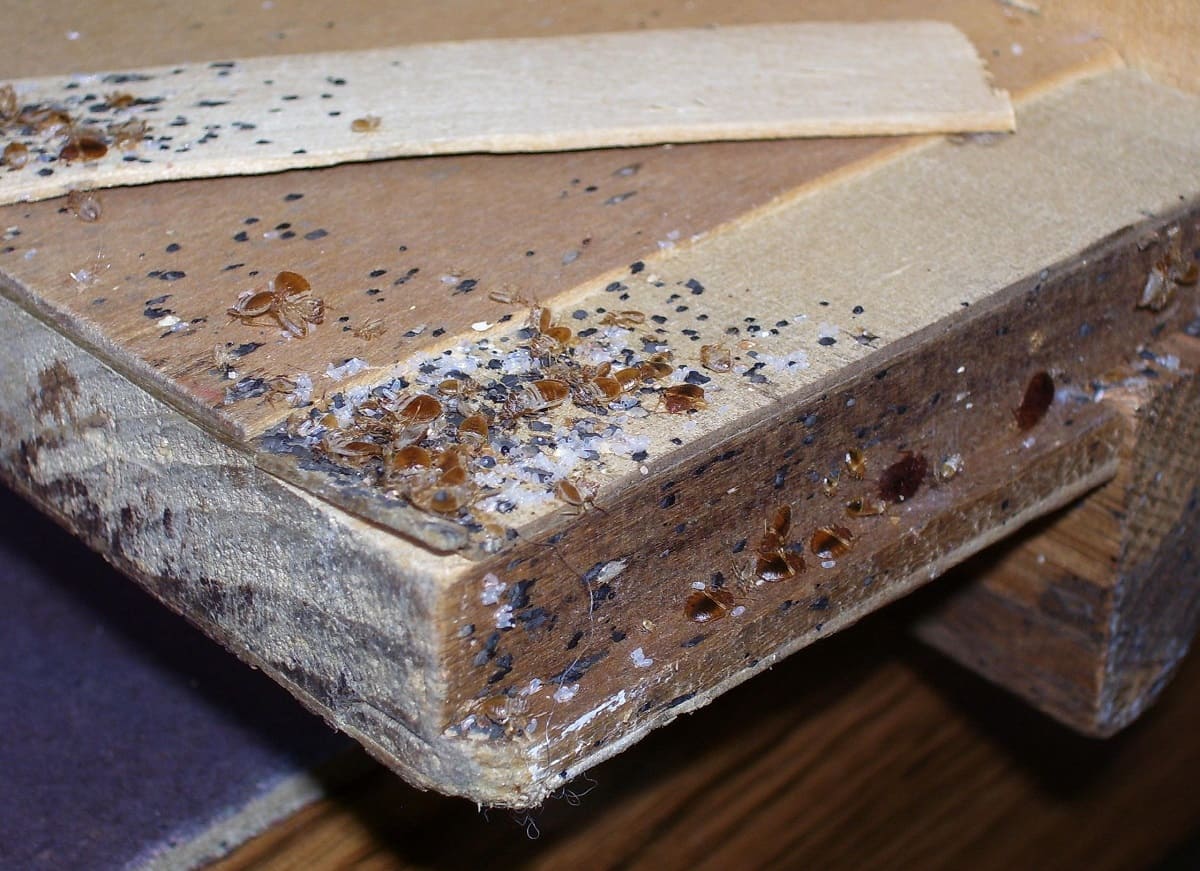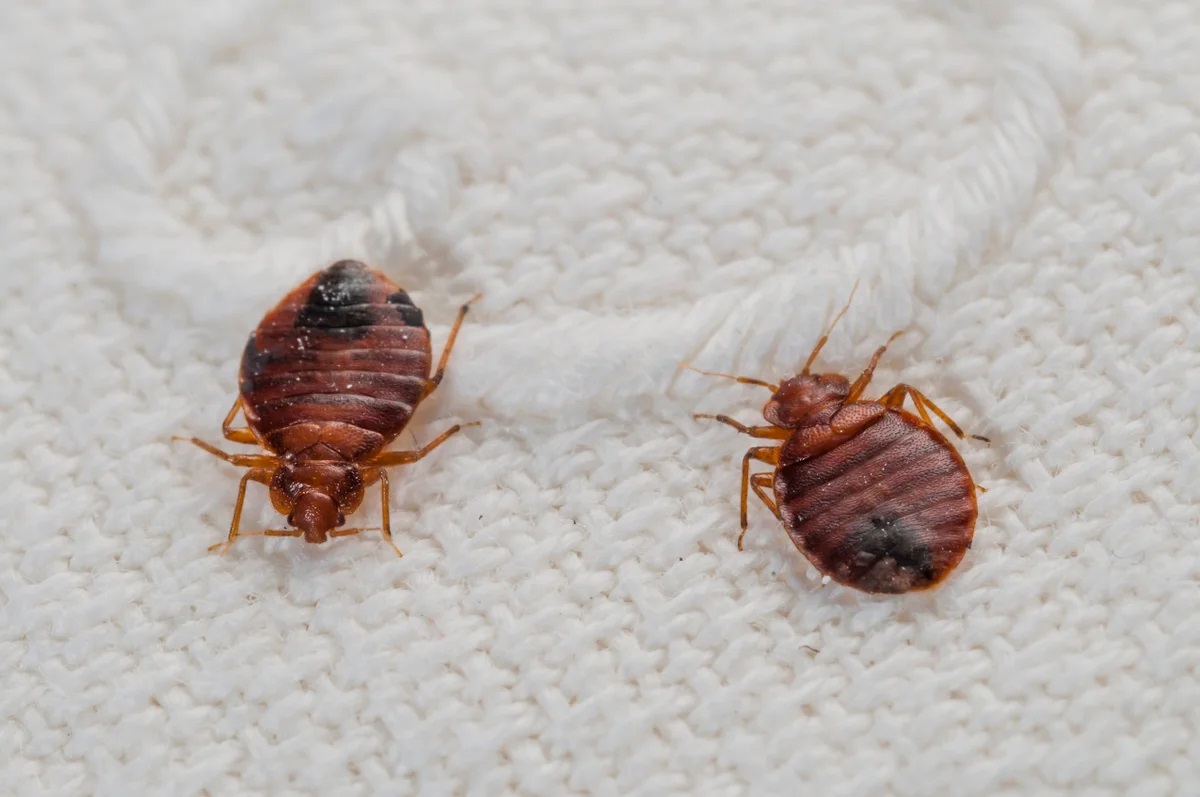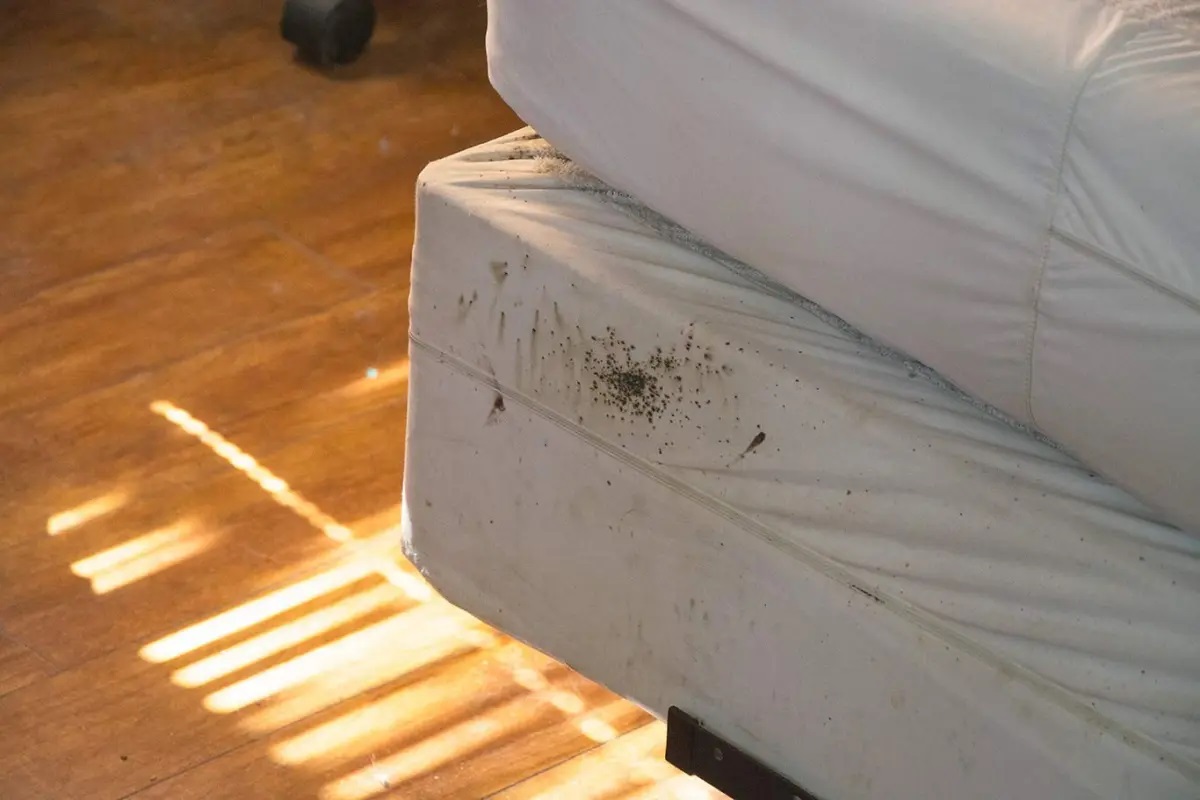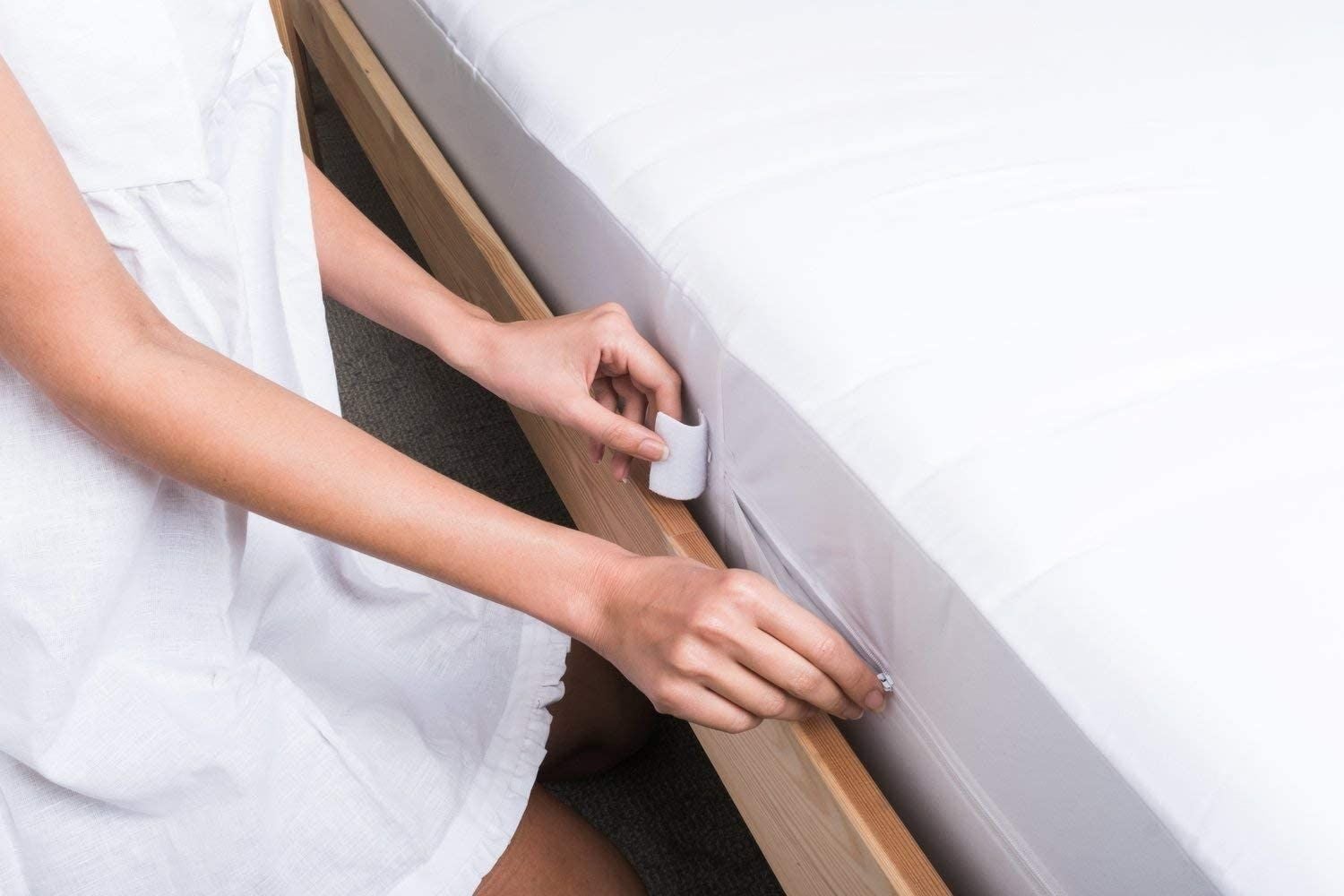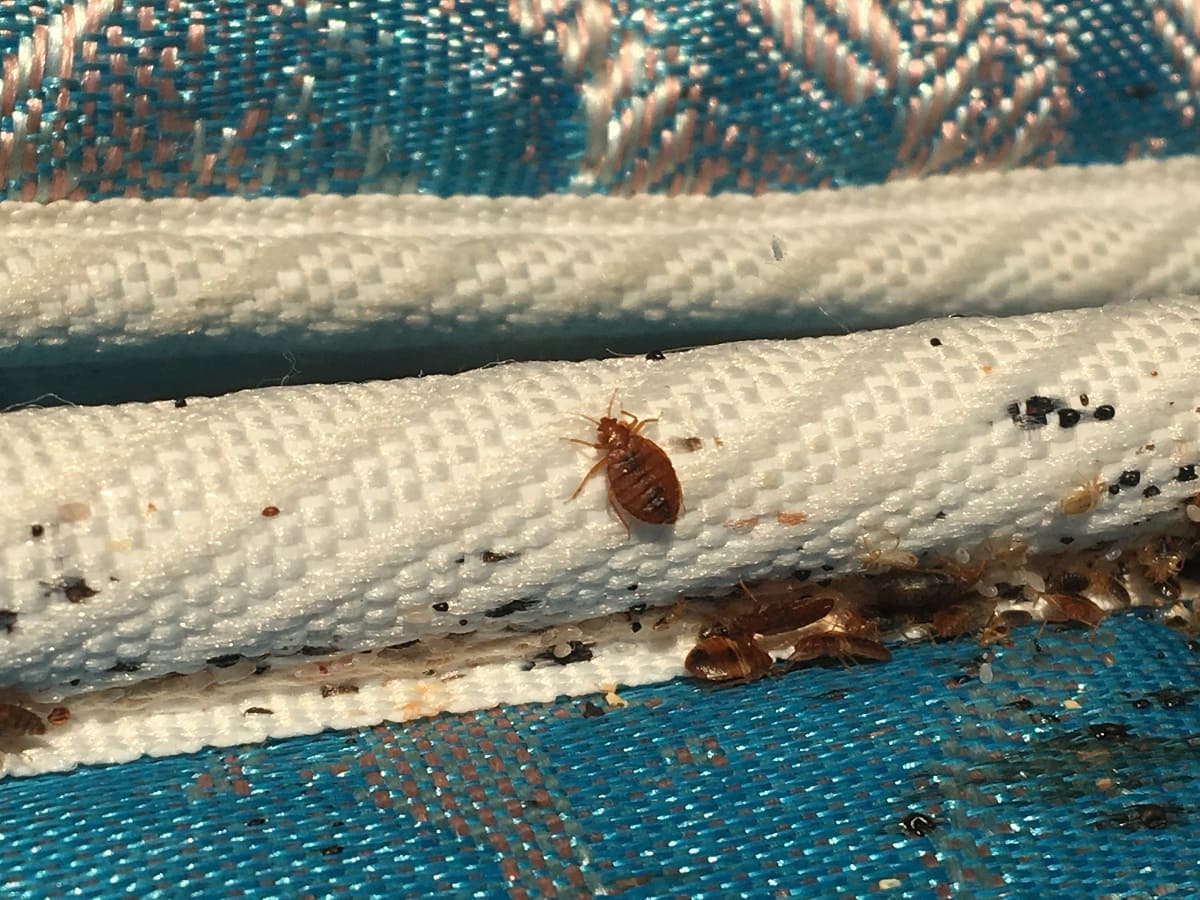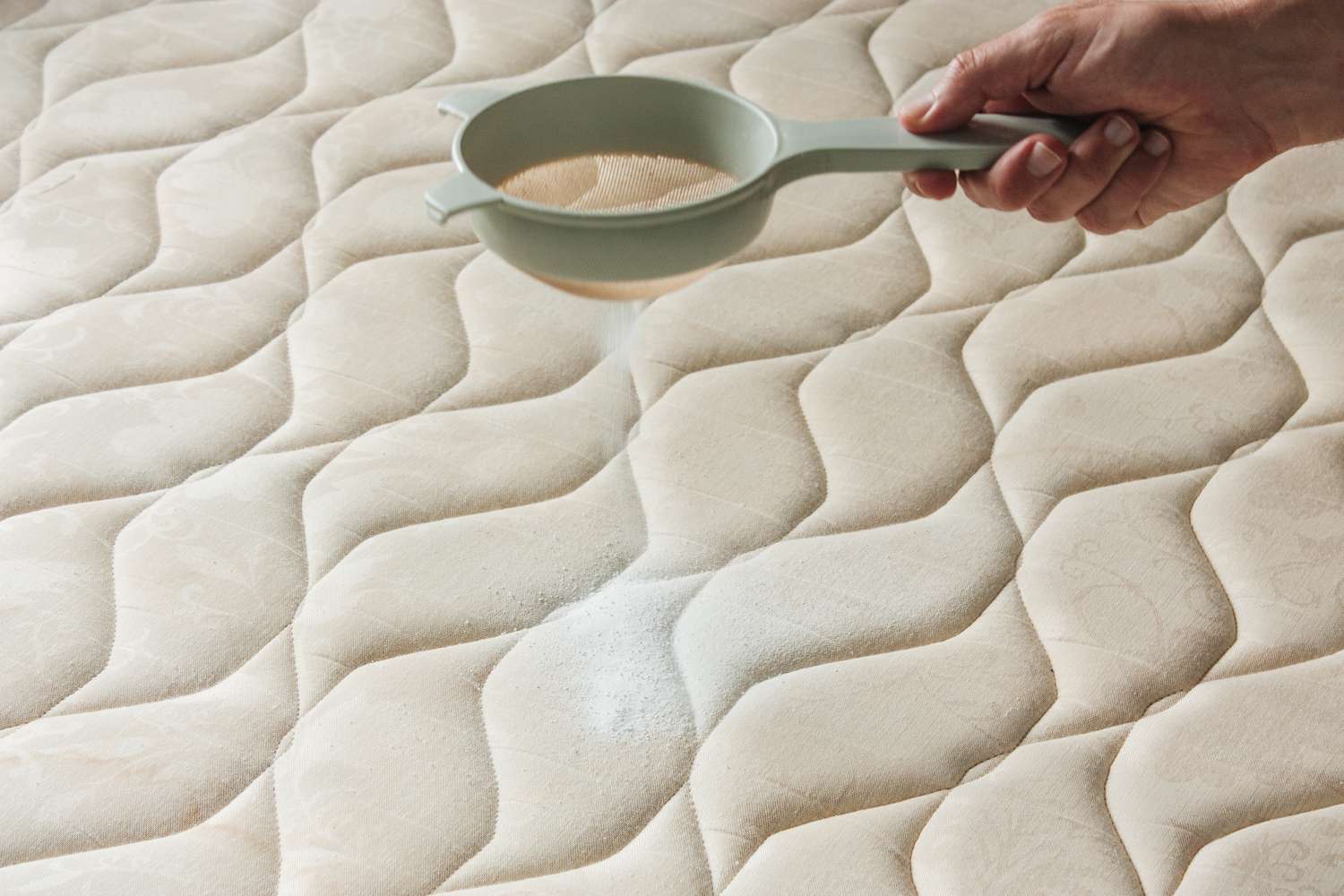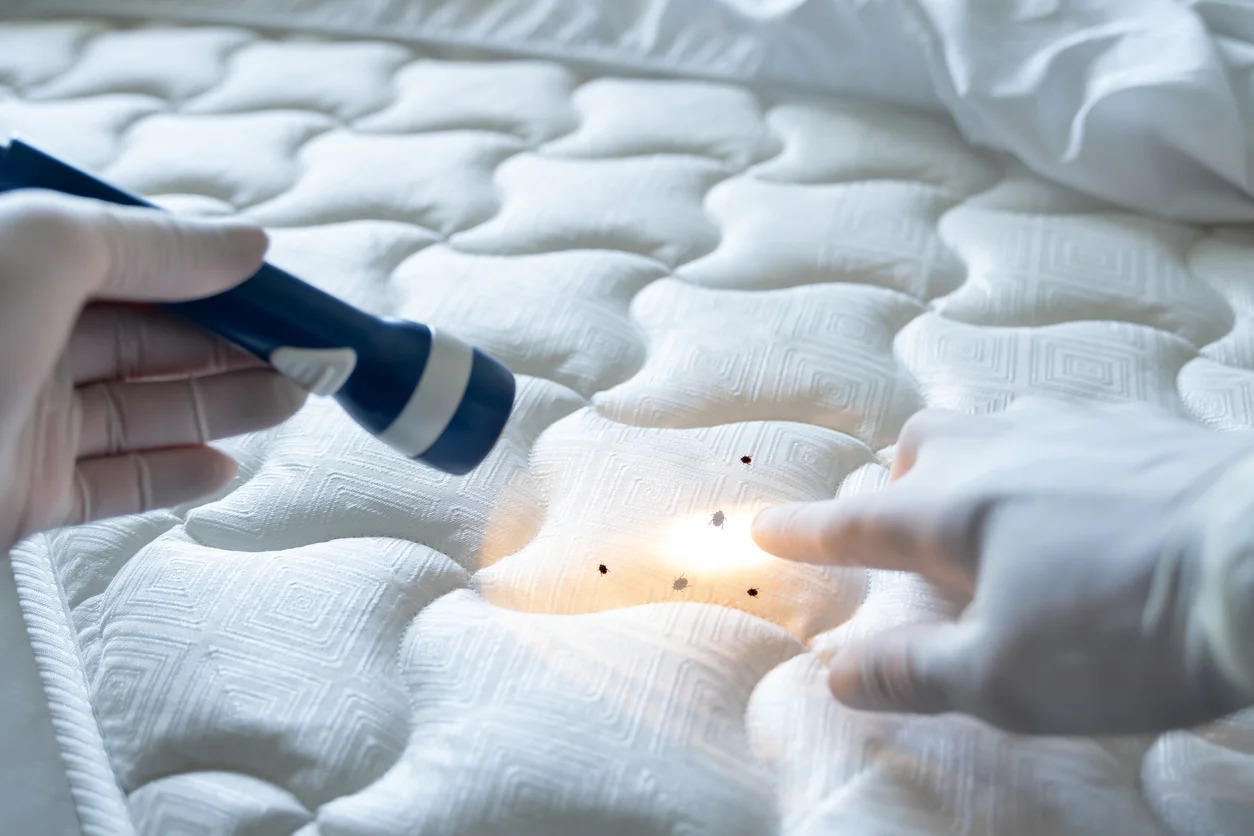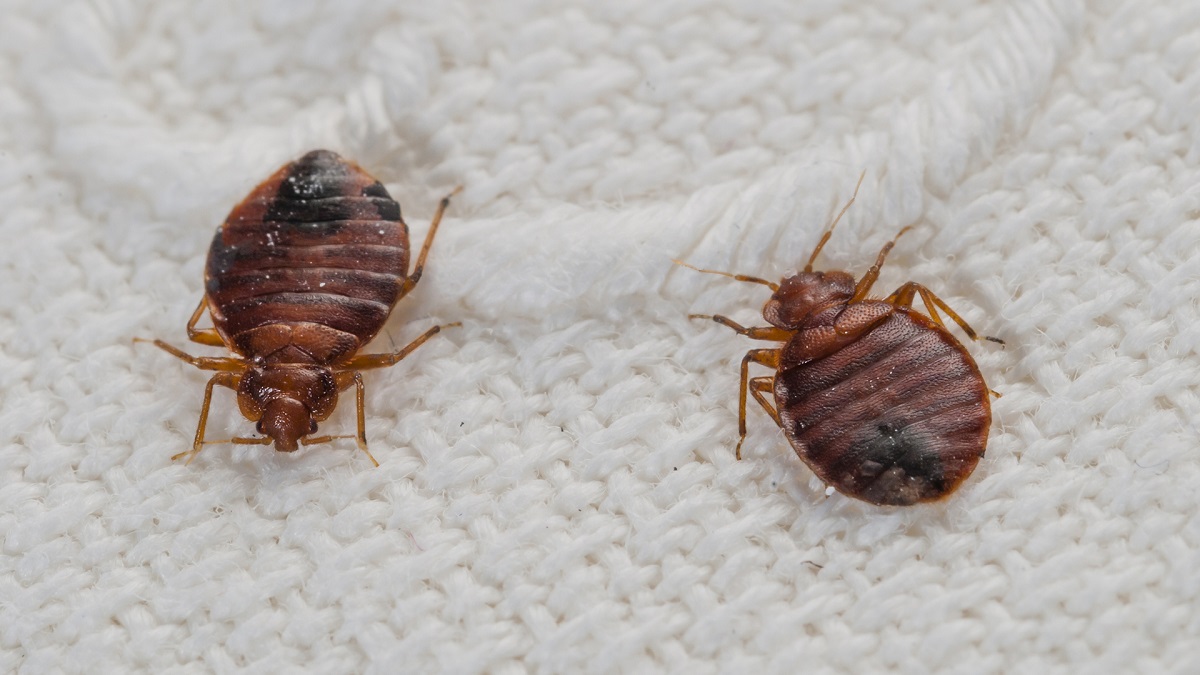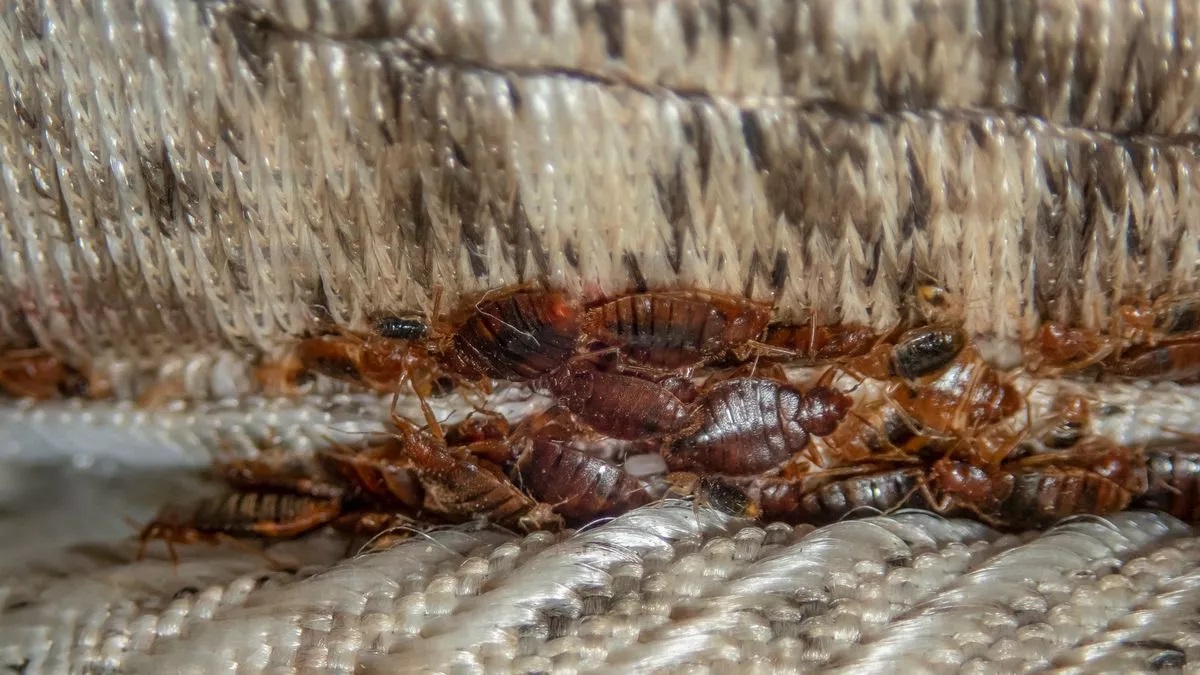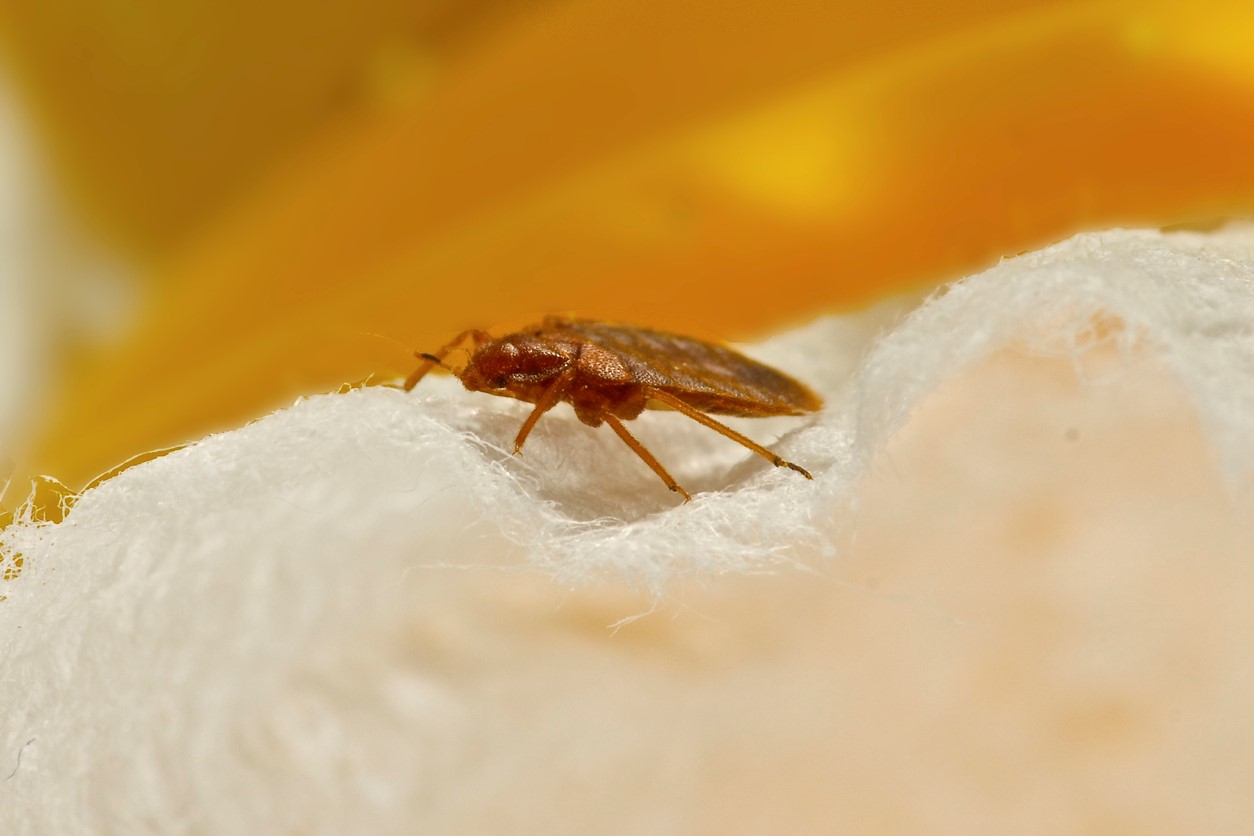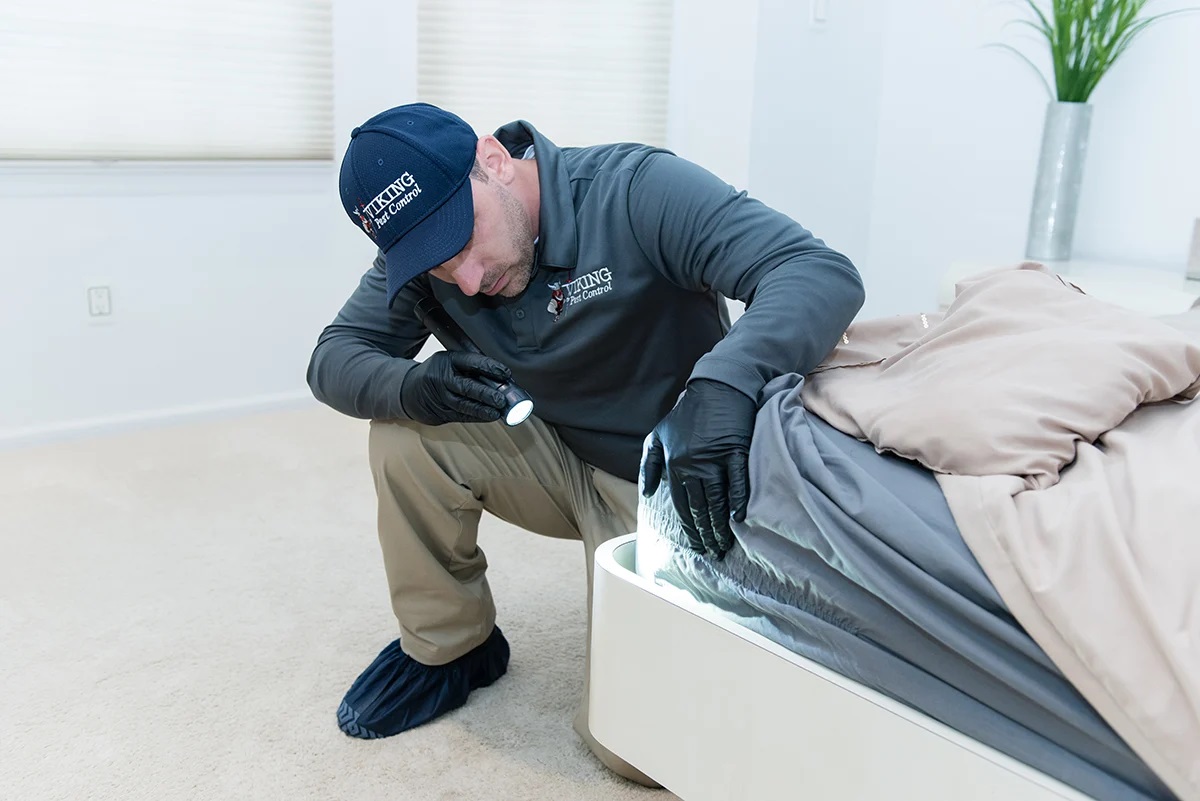Home>Furniture>Bedroom Furniture>How Far Can A Bed Bug Jump
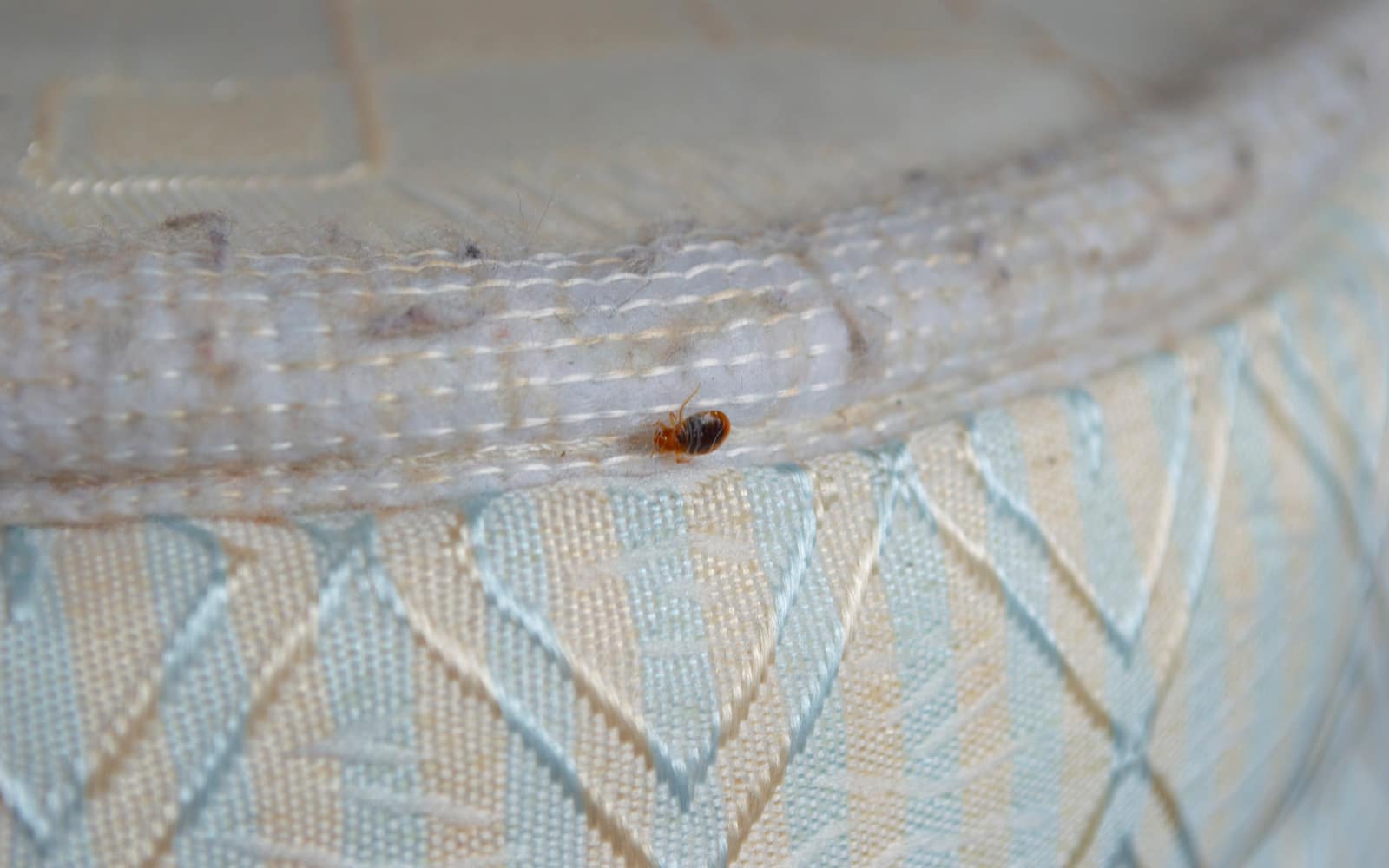

Bedroom Furniture
How Far Can A Bed Bug Jump
Modified: May 6, 2024
Discover how far a bed bug can jump and learn important tips for protecting your bedroom furniture
(Many of the links in this article redirect to a specific reviewed product. Your purchase of these products through affiliate links helps to generate commission for Storables.com, at no extra cost. Learn more)
Introduction
Bed bugs are a common and persistent problem that can wreak havoc in our homes. These minuscule pests are known for their ability to infest mattresses, furniture, and other hiding spots where they can easily feed on our blood while we sleep. If you’ve ever dealt with a bed bug infestation, you know just how frustrating and disruptive it can be.
Understanding the behavior and capabilities of bed bugs is crucial when it comes to effectively combating and preventing infestations. One aspect of their behavior that often raises questions is their ability to jump. How far can a bed bug jump? Can they leap from the floor onto our beds or furniture?
In this article, we’ll delve into the fascinating world of bed bugs and explore their anatomy, behavior, and their mode of movement. We’ll also explore whether bed bugs have the ability to jump and the factors that influence their jumping abilities.
Key Takeaways:
- Bed bugs cannot jump, relying on crawling and climbing to navigate. Factors like body size and surface texture influence their movement abilities. Understanding these limitations aids in effective pest control strategies.
- Research confirms bed bugs lack jumping abilities. They rely on crawling and climbing, using specialized leg structures to maneuver. Preventive measures disrupting their movement pathways are crucial in combating infestations.
Read more: How Far Can Bed Bugs Travel
Anatomy of a Bed Bug
To understand bed bugs’ jumping abilities, it’s essential to first familiarize ourselves with their anatomy. Bed bugs belong to the insect order Hemiptera, which also includes other pests like aphids and cicadas. These pint-sized insects are flat, oval-shaped, and wingless, with adults measuring about the size of an apple seed.
The body of a bed bug is divided into three distinct parts: the head, thorax, and abdomen. The head houses their six needle-like mouthparts, including two mandibles and two maxillae, which they use to pierce the skin and extract blood. Their beak-like appendage, known as the proboscis, also allows them to inject saliva into their hosts.
Behind the head, the thorax consists of three segments, each bearing a pair of legs. Bed bugs use their legs for locomotion, allowing them to crawl across various surfaces. The abdomen, the largest part of their body, contains their digestive system and reproductive organs.
While the anatomy of a bed bug may seem basic, it plays a crucial role in determining their movement and capabilities.
Note: Include a brief description of bed bug life cycle and their reproductive abilities if space permits.
Understanding Bed Bug Behavior
Bed bugs are known for their stealthy and nocturnal behavior. They prefer to hide in dark, secluded areas during the day and emerge at night to feed on the blood of their sleeping hosts. Understanding their behavior is key to effectively combating and preventing infestations.
Bed bugs are attracted to warmth and carbon dioxide, which is why they are often found in beds and other areas where humans rest. They have specialized sensors on their antennae that help them detect body heat and the carbon dioxide exhaled by their victims.
Contrary to popular belief, bed bugs do not fly or jump like fleas. Instead, they rely on their crawling and climbing abilities to move from one location to another. They are skilled climbers and can traverse various surfaces, including walls, furniture, and even the ceiling, using tiny hooks on their legs.
Another important aspect of bed bug behavior is their tendency to aggregate and hide in groups. They prefer to stay in close proximity to their feeding source, forming clusters in the crevices of mattresses, bed frames, and furniture upholstery. This clustering behavior makes it challenging to eliminate them completely.
Understanding how bed bugs behave and where they are most likely to hide is crucial in identifying and treating infestations effectively. Inspection of common hiding spots, regular cleaning, and proper sanitation are important steps in preventing infestations and keeping these persistent pests at bay.
Bed Bugs’ Mode of Movement
When it comes to the mode of movement, bed bugs are primarily crawlers and climbers. With their six legs and specially adapted feet, they are adept at crawling across different surfaces, including fabric, wood, and even plastic.
Bed bugs have tiny, hook-like structures called tarsi on their legs, which allow them to grip onto rough surfaces. This means they can easily crawl along the fibers of bedding, furniture upholstery, and even wall textures. Their small size and flat bodies also enable them to squeeze into narrow cracks and crevices, further aiding their movement.
Despite their crawling prowess, bed bugs are not capable of flying. They lack wings altogether. This means that if you see small, winged insects in your home, they are likely not bed bugs, but rather another pest such as mosquitoes or flies.
In addition to crawling, bed bugs are impressive climbers. They can scale vertical surfaces using a combination of their legs and tarsi hooks, allowing them to navigate along walls, bed frames, and other household items. They can even climb up smooth surfaces, such as glass or metal, although this may take them longer.
It’s important to note that bed bugs’ climbing ability does have limitations. They are not capable of jumping or leaping like fleas or grasshoppers. Their mode of movement is restricted to crawling and climbing, relying on their small size, flattened bodies, and specialized leg structures to maneuver their way through their environment.
Understanding how bed bugs move is crucial for implementing effective preventive measures and targeted treatment strategies. By knowing their limitations and preferred hiding spots, you can focus your efforts on areas where they are most likely to be found.
Tip: Bed bugs cannot jump, but they can crawl quickly. To prevent them from spreading, use mattress and box spring encasements and regularly inspect and vacuum your home.
Can Bed Bugs Jump?
One question that often arises when discussing bed bug movement is whether or not they are capable of jumping. The short answer is no, bed bugs cannot jump like fleas or grasshoppers.
Unlike fleas, which have powerful hind legs that allow them to jump significant distances, bed bugs lack the physical adaptations necessary for jumping. Their bodies are not built for that type of movement, and they do not possess any specialized leg structures for jumping.
Instead, bed bugs rely on their crawling and climbing abilities to move from place to place. They travel by crawling on horizontal surfaces and climbing up vertical ones, such as walls or furniture. This is how they navigate through their environment and find their way to their host for a blood meal.
If you find bed bugs on your bed or furniture, it is most likely because they have crawled or climbed their way there from their hiding spots. They do not possess the ability to jump onto these surfaces from the ground.
It’s worth noting that bed bugs are not particularly fast. They crawl at a relatively slow pace, moving at a speed of about 3 to 4 feet per minute. This is why they tend to hide in close proximity to their feeding source, so they don’t have to travel far to reach their hosts.
So, while bed bugs may be great crawlers and climbers, they cannot jump. Their movement is limited to crawling on horizontal surfaces and climbing up vertical ones.
Understanding the limitations of bed bug movement can help you better anticipate their behavior and take appropriate measures to prevent and control infestations in your home.
Read more: How Long Can Bed Bugs Live Without A Host
Factors Influencing Bed Bug Jumping Abilities
Although bed bugs cannot jump like fleas or grasshoppers, there are still factors that can influence their ability to move and traverse different surfaces. Understanding these factors can provide insight into their behavior and help in developing effective pest control strategies.
1. Body Size: The size of an individual bed bug can affect its overall mobility. Smaller bed bugs may be more nimble and able to navigate through tight spaces with ease, while larger ones may have a harder time crawling or squeezing into narrow cracks.
2. Surface Texture: The texture of the surface bed bugs are crawling or climbing on can impact their movement. Rough surfaces, such as fabric or wood, provide better gripping opportunities for their tarsi hooks. In contrast, smooth surfaces like glass or metal may pose more difficulties for their crawling and climbing abilities.
3. Environmental Conditions: Bed bugs are ectothermic, meaning their body temperature is regulated by their surroundings. Extreme temperatures, both hot and cold, can affect their mobility and activity levels. They are more active in temperatures ranging from 70 to 80 degrees Fahrenheit, while temperatures below freezing or above 113 degrees Fahrenheit can be lethal to them.
4. Age and Health: The age and health of bed bugs can also impact their mobility. Younger bed bugs, known as nymphs, are generally smaller and more agile than adult bed bugs. Additionally, bed bugs that are weakened or injured may have limited movement abilities.
5. Chemical Exposure: Bed bugs are known to have developed resistance to certain insecticides over time. If they have been exposed to and survived previous treatments, their mobility and crawling abilities may remain unaffected, making control efforts more challenging.
Understanding these factors can help homeowners and pest control professionals develop targeted strategies to combat bed bug infestations. By considering the specific conditions and limitations that bed bugs face, it is possible to implement effective control measures and prevent further spread.
Study: Testing the Jumping Abilities of Bed Bugs
To gain a better understanding of bed bugs’ jumping abilities or lack thereof, researchers have conducted studies to test their movement capabilities. One such study, conducted by entomologists at a leading university, sought to investigate and measure the jumping behavior of bed bugs.
The researchers set up a controlled experiment using a specially designed apparatus consisting of a smooth surface and a target area. They placed individual bed bugs, both nymphs and adults, onto the smooth surface and observed their movements to determine if they exhibited any jumping behavior.
Throughout the duration of the study, not a single bed bug demonstrated any jumping behavior. Instead, they relied solely on their crawling and climbing abilities to move across the smooth surface. This confirmed the notion that bed bugs are unable to jump.
The researchers also observed that bed bugs may use a behavior known as “drop-off” to navigate off elevated surfaces. When faced with a drop-off edge, such as the edge of a bed or furniture, bed bugs would extend their front legs over the edge and move in a controlled descent, using their tarsi hooks to grip onto the surface and lower themselves down.
These findings align with previous knowledge that bed bugs primarily crawl and climb to move around. The absence of jumping abilities further emphasizes the importance of focusing on preventive measures that disrupt their crawling and climbing pathways, such as sealing cracks and crevices and frequently vacuuming or steam cleaning potential hiding spots.
While the study clarified the inability of bed bugs to jump, it also highlighted the adaptability and resilience of these pests. Their crawling and climbing abilities, combined with their agile maneuvering, make them highly effective at infesting and spreading within homes and other environments.
Future research may delve further into other aspects of bed bug movement, such as the impact of surface texture, temperature, and other factors on their crawling and climbing capabilities. These insights can contribute to the development of more targeted and effective strategies for controlling and eliminating bed bug infestations.
Conclusion
Bed bugs, with their ability to cause sleepless nights and infest our homes, are a persistent nuisance. Understanding their behavior and capabilities is crucial when it comes to combating and preventing infestations effectively.
Through our exploration of the anatomy, behavior, and mode of movement of bed bugs, we have discovered that they are primarily crawlers and climbers. They lack the ability to jump, relying on their adept crawling and climbing skills to navigate through their environment.
Factors such as body size, surface texture, environmental conditions, age, and health can influence bed bugs’ movement abilities. These factors highlight the importance of considering the specific conditions in which bed bugs operate when developing targeted control strategies.
Research studies have confirmed that bed bugs do not possess the ability to jump. Instead, they rely on crawling and utilizing their specialized leg structures to navigate horizontal and vertical surfaces effectively. These findings underscore the need to focus on preventive measures that disrupt their crawling and climbing pathways.
As we continue to gain insights into the behavior and capabilities of bed bugs, it is essential to remain vigilant in our efforts to prevent and control infestations. Regular inspection, thorough cleaning, and proper sanitation practices are key preventive measures to keep these pests at bay.
While bed bugs can be a challenging pest to eliminate completely, understanding their movement limitations aids in the development of effective treatment strategies. By disrupting their crawling and climbing abilities and implementing targeted control measures, it is possible to minimize their impact and protect our homes from infestations.
In conclusion, while bed bugs may be small and elusive, knowing their capabilities and behavior empowers us to be proactive in the fight against these persistent pests. By staying informed and implementing comprehensive pest management strategies, we can create a home environment free from the discomfort and frustration caused by bed bug infestations.
Curious about other pesky invaders that might be lurking in your home? If bed bugs had you worried, wait until you learn about pantry moths. Our next feature offers expert advice on how to rid your spaces of these unwelcome guests efficiently. Perfect for anyone looking to safeguard their home against infestations, this guide is a must-read for maintaining a pest-free environment.
Frequently Asked Questions about How Far Can A Bed Bug Jump
Was this page helpful?
At Storables.com, we guarantee accurate and reliable information. Our content, validated by Expert Board Contributors, is crafted following stringent Editorial Policies. We're committed to providing you with well-researched, expert-backed insights for all your informational needs.
